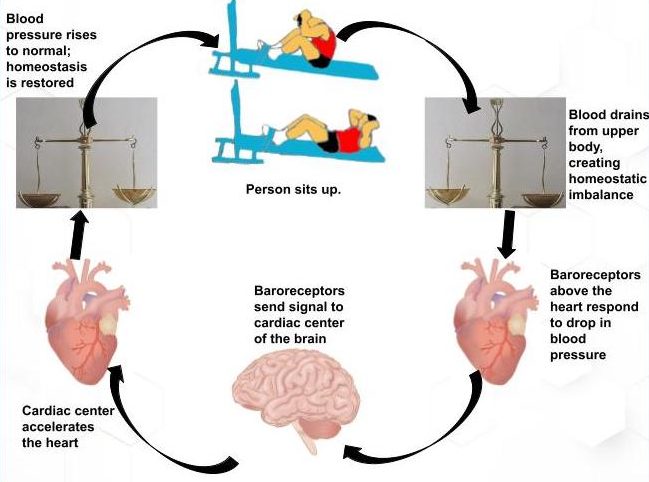Lesson 2: Homeostasis

Homeostasis
By the end of this lesson, students will be able to:
- Define homeostasis and describe the multiple levels of homeostatic maintenance in physiology.
- Compare and contrast positive and negative feedback regarding the relationship between stimulus and response.
Introduction
Homeostasis is the body’s ability to maintain stable internal conditions despite external changes. This dynamic equilibrium is essential for survival, regulating critical physiological parameters such as temperature, pH, and glucose levels. The human body utilizes intricate mechanisms, primarily governed by the nervous and endocrine systems, to achieve homeostasis.
Regulators of Homeostasis
The two primary systems responsible for homeostasis are:
- Nervous System: Provides rapid responses through nerve impulses.
- Endocrine System: Regulates physiological processes via hormones.

Homeostatic Imbalance
When homeostasis is disrupted, it can lead to disease and dysfunction. A failure in homeostatic regulation may result from internal disorders or external environmental factors. Chronic imbalance can cause conditions such as diabetes, hypertension, and organ failure.
Feedback Mechanisms
Homeostasis is maintained through feedback loops, which are categorized into negative and positive feedback mechanisms.
Negative Feedback Mechanisms
Negative feedback is the most common regulatory mechanism in the human body. It works by reversing the initial stimulus to maintain stability.
- Example: Regulation of body temperature.
- Example: Blood glucose regulation via insulin and glucagon secretion.

Another example is blood pressure regulation through postural adjustments. When blood pressure drops due to standing up quickly, receptors signal the nervous system to constrict blood vessels and restore normal pressure.

Positive Feedback Mechanisms
Unlike negative feedback, positive feedback enhances the original stimulus to drive a process to completion. This mechanism is less common in the body but plays crucial roles in specific physiological events.
- Example: Blood clotting, where platelets continue to accumulate until a clot forms.
- Example: Childbirth, where oxytocin increases uterine contractions until delivery.
Summary
Homeostasis ensures that the body maintains balance through regulatory feedback systems:
- Negative feedback is the primary mechanism, shutting off or reducing a stimulus to restore equilibrium.
- Positive feedback amplifies a process until completion and is used in limited cases such as clotting and childbirth.
- The nervous and endocrine systems coordinate these processes to sustain stability.
By understanding homeostasis, we gain insight into the body’s ability to self-regulate and the consequences of its disruption, reinforcing the importance of maintaining health and physiological balance.
Watch this lesson video walking you through the Module 1 Lesson 2 Homeostasis (PDF) slides.
Practice Questions
Use these practice questions to assess your knowledge before you move on to the next section.

